Published
- 13 min read
Top Fly.io Alternatives in 2025 for Developers and Startups
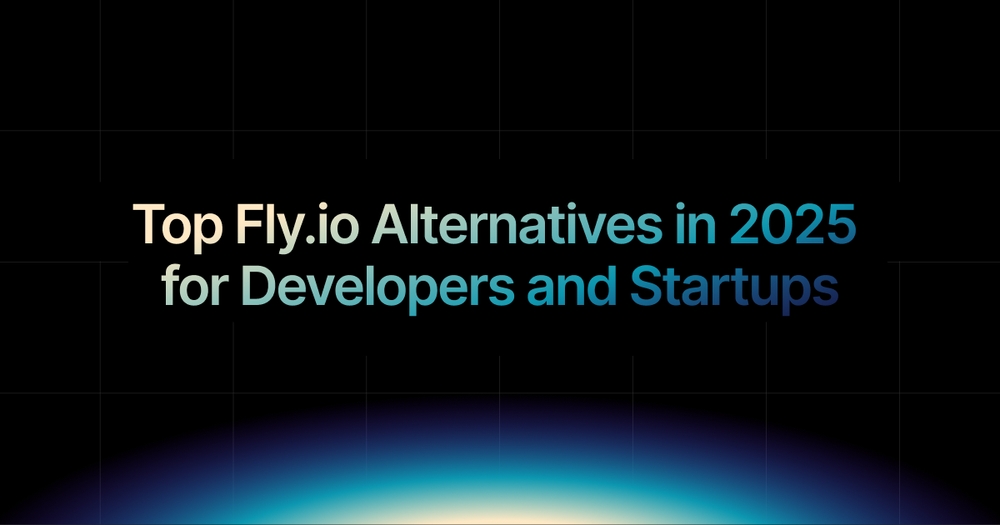
Introduction
Fly.io has grown in popularity for developers who want to deploy applications close to their users. By focusing on edge-first infrastructure, it reduces latency and provides a distributed hosting model that improves performance for global audiences.
However, as projects grow beyond basic web apps, developers often face challenges in configuration complexity, limited automation, and unpredictable scaling costs. Many teams start looking for Fly.io alternatives that offer the same global performance but with simpler management, AI automation, and transparent pricing.
This article explores the best Fly.io alternatives in 2025, highlighting platforms that combine scalability, cost efficiency, and ease of use.
Among them, Kuberns stands out for providing AWS-backed reliability with intelligent automation, one-click deployments, and up to 40 percent lower infrastructure costs.
1. Kuberns: The AI-Powered Alternative to Fly.io
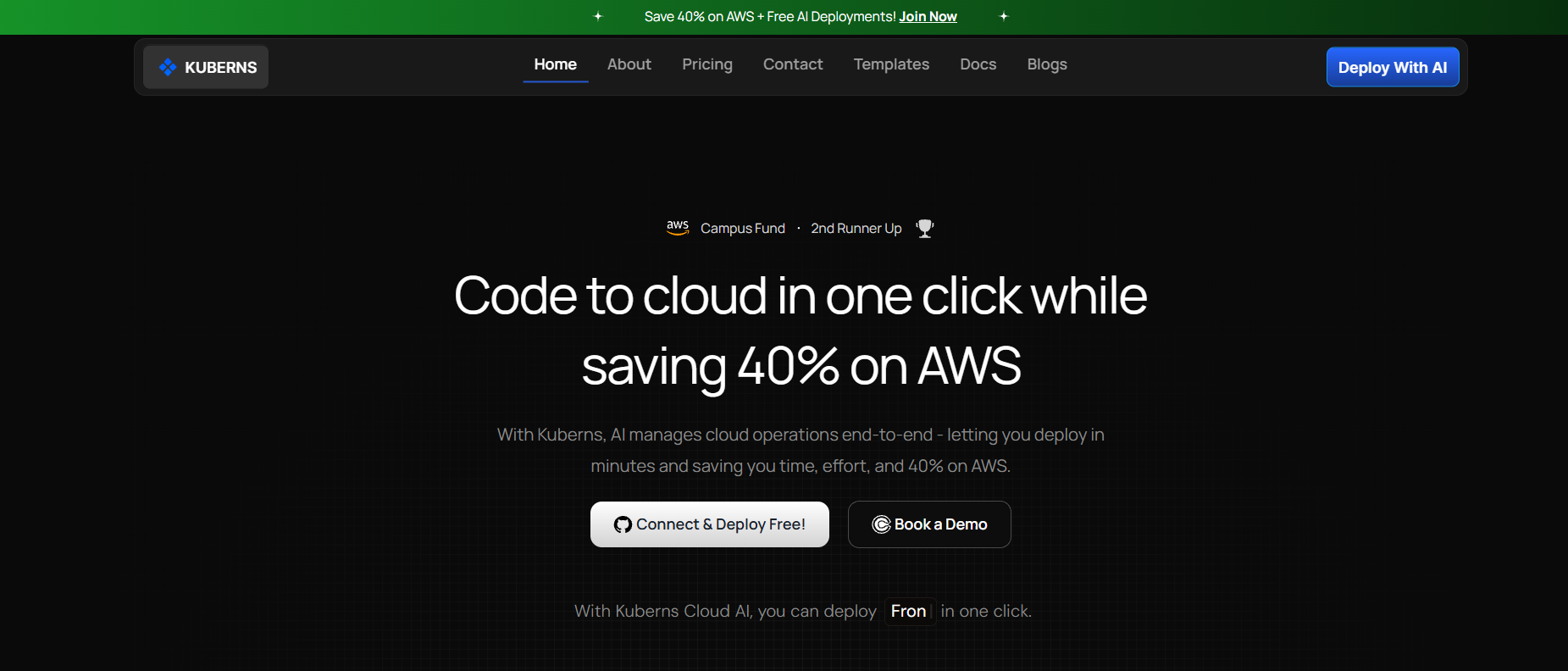 Kuberns is a modern cloud deployment platform built for developers who want the global scalability of AWS without the operational complexity. It combines intelligent automation with full-stack support, giving teams complete control over deployments, scaling, and monitoring.
Kuberns is a modern cloud deployment platform built for developers who want the global scalability of AWS without the operational complexity. It combines intelligent automation with full-stack support, giving teams complete control over deployments, scaling, and monitoring.
Key Highlights
- One-click deployment: Connect your GitHub or GitLab repo and deploy frontend, backend, or containerized apps instantly.
- AI-powered scaling: Kuberns automatically adjusts resources in real time based on demand.
- Up to 40 percent AWS cost savings: Kuberns helps teams save on AWS infrastructure while maintaining enterprise-grade performance. Learn more in Cut AWS Bills by 40 Percent Without Compromising on Security or Features.
- Full-stack support: From APIs and databases to Docker workloads, all environments are supported.
- Zero DevOps setup: No manual provisioning, CI/CD configuration, or monitoring setup needed.
Kuberns runs on AWS infrastructure, ensuring global availability, high uptime, and security compliance. It’s ideal for startups and enterprises that want automation, scalability, and lower costs in one platform.
For a deeper understanding, read What Is Kuberns: The Simplest Way to Build, Deploy, and Scale Full-Stack Apps.
2. Render
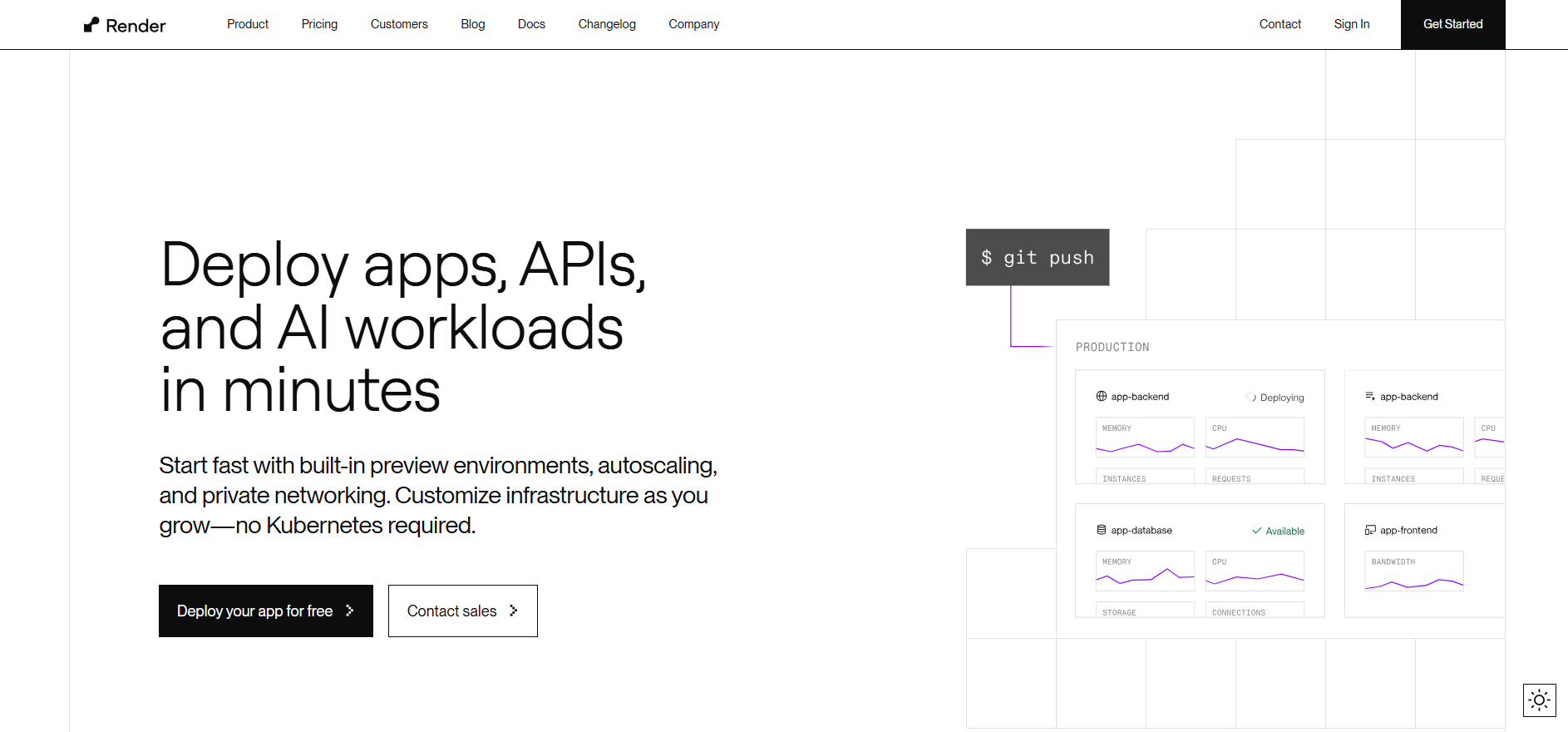 Render is a developer-friendly cloud platform that simplifies deploying both static and dynamic applications. It supports web services, databases, cron jobs, background workers, and Docker-based containers. With its clean dashboard and Git-based automation, Render enables quick CI/CD pipelines for small to mid-sized teams.
Render is a developer-friendly cloud platform that simplifies deploying both static and dynamic applications. It supports web services, databases, cron jobs, background workers, and Docker-based containers. With its clean dashboard and Git-based automation, Render enables quick CI/CD pipelines for small to mid-sized teams.
Best for: Teams looking for an easy-to-use PaaS solution to host web apps or APIs without managing infrastructure manually.
Key advantages: Built-in SSL, global CDN, auto-deployments from Git, and managed PostgreSQL databases.
Limitations: Render’s simplicity comes at the cost of scalability control. As projects grow, pricing can increase rapidly with traffic. It also lacks deep automation and cost optimization features that Kuberns provides through AI-driven deployment and AWS-based scalability.
For a full technical breakdown, read Render vs Kuberns.
3. Netlify
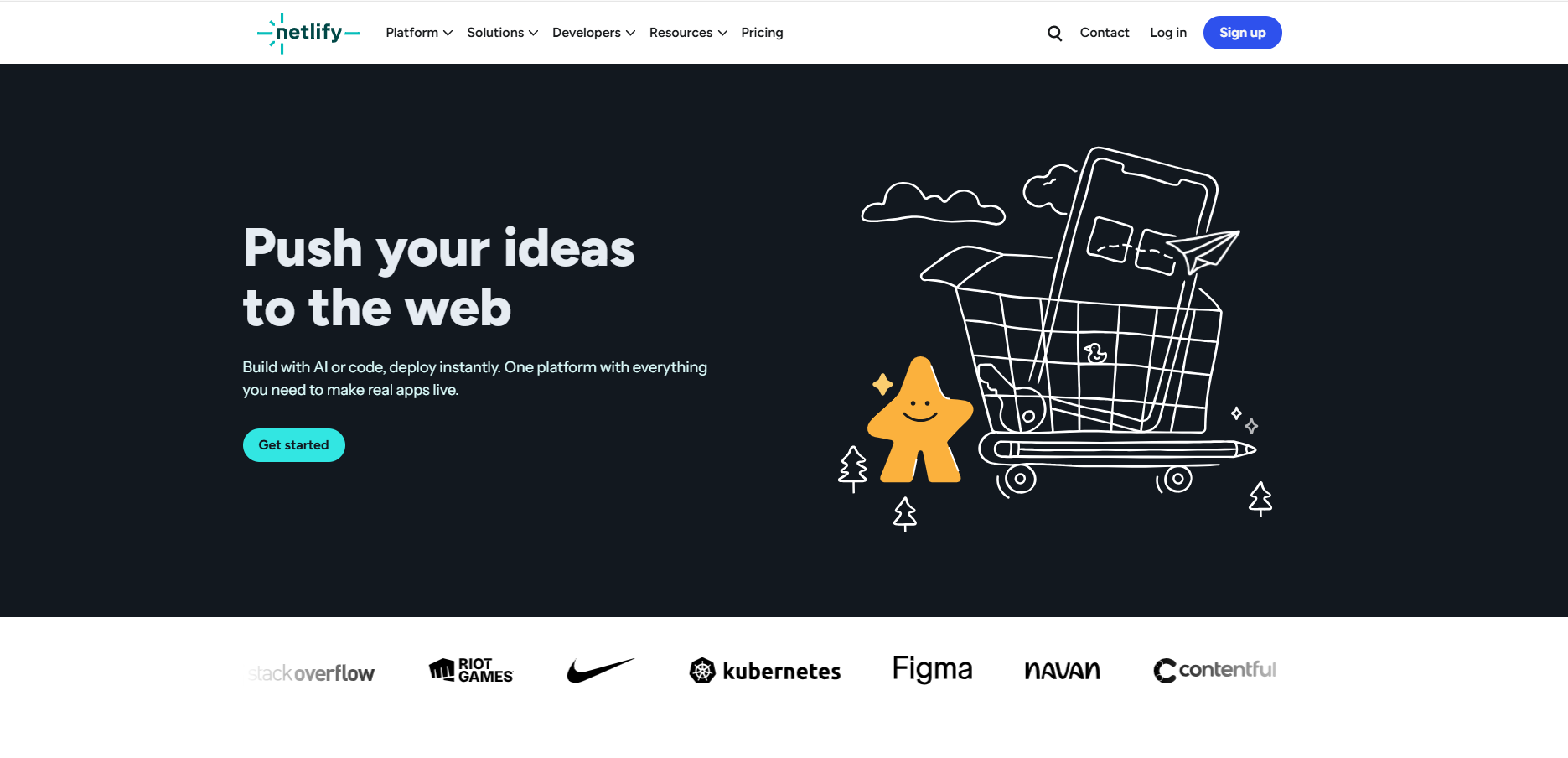 Netlify is one of the most popular platforms for hosting static websites and JAMstack applications. It automates Git-based builds, provides serverless functions, and offers edge functions for deploying apps closer to users. Netlify is widely loved for its simplicity and seamless integration with frameworks like React, Vue, and Next.js.
Netlify is one of the most popular platforms for hosting static websites and JAMstack applications. It automates Git-based builds, provides serverless functions, and offers edge functions for deploying apps closer to users. Netlify is widely loved for its simplicity and seamless integration with frameworks like React, Vue, and Next.js.
Best for: Developers, freelancers, and small teams building static or frontend-heavy projects that do not require complex backend services.
Key advantages: Instant rollbacks, built-in CDN, serverless functions, and automatic HTTPS.
Limitations: Netlify’s scope is limited to frontend applications. It lacks full-stack or persistent backend support, which makes it unsuitable for API-driven or microservice-based architectures. In contrast, Kuberns provides a unified environment for frontend and backend workloads with automated scaling, logging, and observability.
Learn more in Best Netlify Alternatives.
4. Vercel
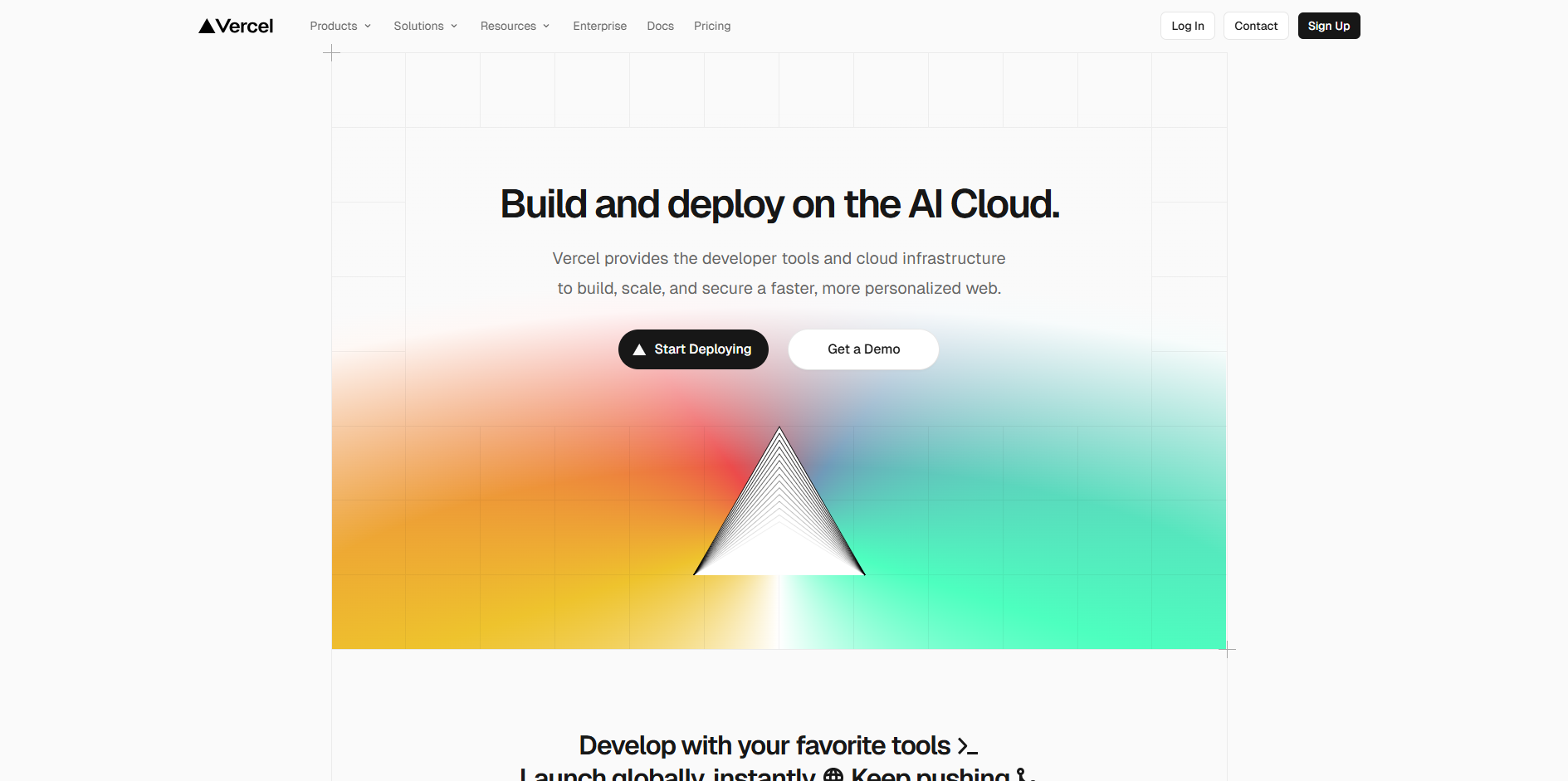 Vercel has become the go-to platform for frontend developers, especially those using Next.js. It provides serverless deployments, instant rollbacks, global caching, and smart routing for edge-optimized performance. Its automatic build and deploy process makes it easy for developers to push updates directly from Git repositories.
Vercel has become the go-to platform for frontend developers, especially those using Next.js. It provides serverless deployments, instant rollbacks, global caching, and smart routing for edge-optimized performance. Its automatic build and deploy process makes it easy for developers to push updates directly from Git repositories.
Best for: Teams focusing on frontend performance, content-driven websites, or applications that require instant global availability.
Key advantages: Deep integration with Next.js, powerful CDN, and analytics for user performance tracking.
Limitations: While Vercel delivers top-tier frontend performance, it falls short for teams needing backend processing or containerized workloads. Backend services require separate hosting, leading to fragmented infrastructure. Kuberns solves this problem by offering full-stack deployments on AWS with built-in cost management and infrastructure control.
Read more in Vercel vs Kuberns.
5. DigitalOcean App Platform
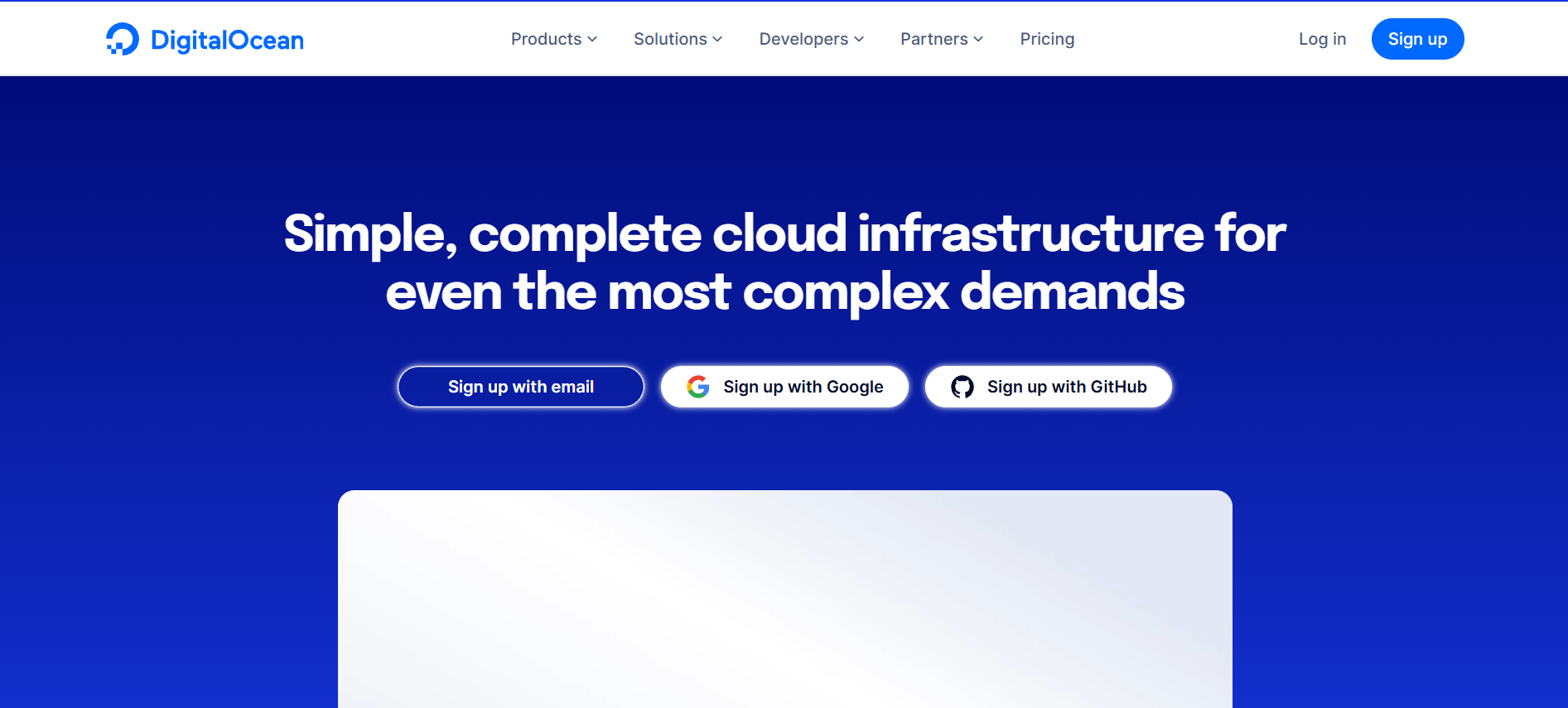 DigitalOcean App Platform provides a balance between simplicity and flexibility for developers who need predictable cloud costs. It supports web applications, APIs, static sites, and Docker containers, all deployable directly from GitHub or GitLab. The platform automatically manages scaling, SSL, and load balancing, which makes it ideal for small teams.
DigitalOcean App Platform provides a balance between simplicity and flexibility for developers who need predictable cloud costs. It supports web applications, APIs, static sites, and Docker containers, all deployable directly from GitHub or GitLab. The platform automatically manages scaling, SSL, and load balancing, which makes it ideal for small teams.
Best for: Startups and solo developers seeking predictable pricing and easy deployment for full-stack applications.
Key advantages: Transparent pricing, managed databases, automatic scaling, and strong developer documentation.
Limitations: Although it covers basic automation, DigitalOcean App Platform lacks the advanced AI-driven scaling, integrated observability, and cross-region optimization that Kuberns provides.
Discover more in Best DigitalOcean Alternatives for Startups and Solo Developers.
6. AWS Amplify
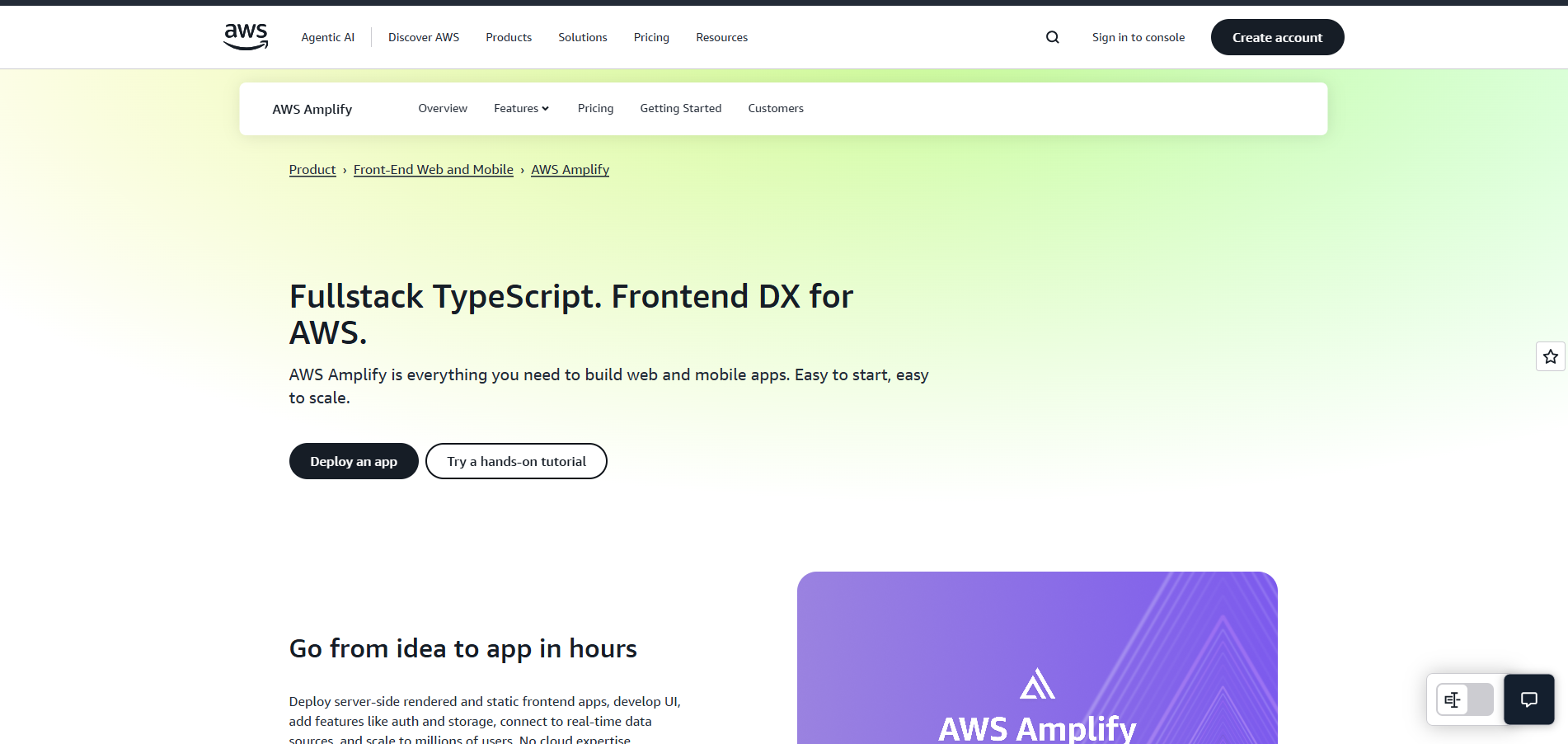 AWS Amplify is Amazon’s platform for building and hosting modern web and mobile applications. It integrates directly with AWS services like S3, Lambda, DynamoDB, and CloudFront, making it an excellent choice for developers already in the AWS ecosystem. Amplify provides tools for hosting static and serverless apps, managing authentication, and connecting APIs seamlessly.
AWS Amplify is Amazon’s platform for building and hosting modern web and mobile applications. It integrates directly with AWS services like S3, Lambda, DynamoDB, and CloudFront, making it an excellent choice for developers already in the AWS ecosystem. Amplify provides tools for hosting static and serverless apps, managing authentication, and connecting APIs seamlessly.
Best for: Teams and enterprises that already rely on AWS for application hosting, backend services, or data management.
Key advantages: Deep integration with AWS tools, built-in authentication via Cognito, easy connection to APIs through API Gateway, and support for CI/CD pipelines.
Limitations: While Amplify offers flexibility and control, it can be complex for smaller teams or developers who want simplicity. Manual configuration of backend services, IAM roles, and scaling policies can take time. Kuberns simplifies this experience by offering the same AWS-grade reliability and scalability, but with one-click deployments, AI automation, and no DevOps overhead.
If you are considering AWS but want faster deployment and better cost control, read How to Reduce AWS Cost to understand how teams save up to 40 percent using Kuberns.
Comparison Table: Best Fly.io Alternatives in 2025
Here’s a quick comparison of the leading Fly.io alternatives in 2025 based on scalability, automation, pricing, and best use cases.
| Platform | Key Features | Best For | Limitations |
|---|---|---|---|
| Kuberns | AI-powered automation, one-click Git deployments, live monitoring, up to 40% AWS cost savings | Developers, startups, and enterprises seeking full-stack deployment and cost efficiency | Focused on automation over granular manual configuration. |
| Render | Supports web services, databases, cron jobs, and containers with simple setup | Teams deploying web apps or APIs that need quick scaling | Costs rise with traffic, limited automation compared to Kuberns |
| Netlify | Git-based builds, serverless functions, and edge delivery | Frontend-heavy or static JAMstack projects | Limited backend and database support |
| Vercel | Serverless hosting for Next.js and React apps with global caching | Frontend teams focused on performance and speed | Separate backend hosting required, costs rise with scale |
| DigitalOcean App Platform | Full-stack hosting with Docker support, managed databases, and transparent pricing | Startups and small teams seeking predictable cloud costs | Limited automation and monitoring tools |
| AWS Amplify | Deep integration with AWS services like S3, Lambda, and CloudFront | Teams already using AWS for apps and infrastructure | Complex setup, manual configuration required |
How to Choose the Right Fly.io Alternative?
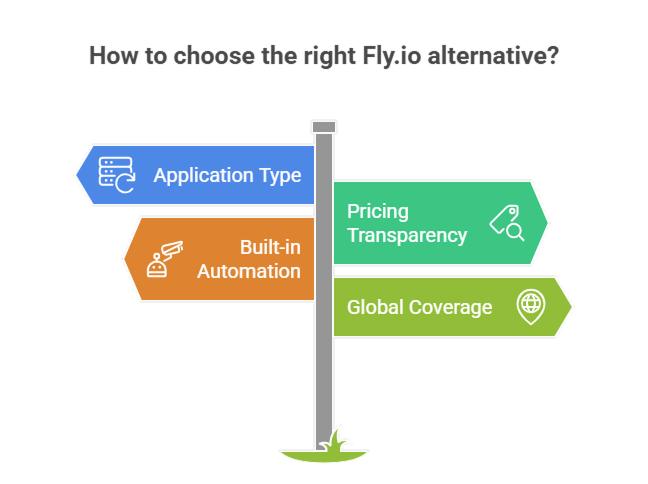 Selecting the right alternative depends on your workload, scalability goals, and budget. Consider these key factors:
Selecting the right alternative depends on your workload, scalability goals, and budget. Consider these key factors:
1. Define Your Application Type
Static sites, APIs, and microservices require different scaling models. Choose a platform that supports your tech stack natively.
2. Evaluate Pricing Transparency
Predictable pricing helps teams plan better. Avoid platforms with hidden data transfer or request-based costs.
3. Look for Built-in Automation
Choose a solution that automates deployment, scaling, and monitoring from day one. Kuberns, for example, provides complete CI/CD and observability out of the box.
4. Check Global Coverage
If your app serves global users, prioritize providers with multi-region hosting and edge capabilities.
For a detailed decision-making framework, read How to Pick the Best IaaS Platform for Your Business Needs in 2025.
Why Kuberns Is the Right Choice?
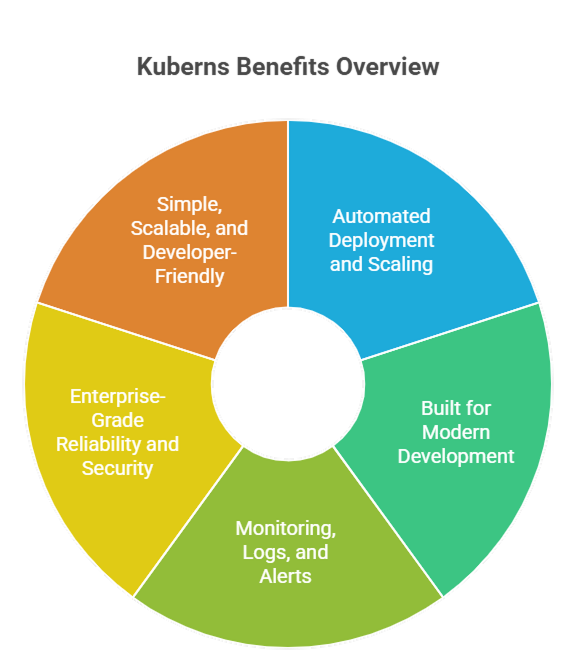 For developers and teams seeking to move beyond the limitations of Fly.io, Kuberns offers everything you need to scale effortlessly while keeping costs low.
For developers and teams seeking to move beyond the limitations of Fly.io, Kuberns offers everything you need to scale effortlessly while keeping costs low.
Kuberns automates infrastructure management, from provisioning to monitoring, so teams can deploy faster and focus on development. Its AI-driven scaling ensures high performance during peak traffic while avoiding unnecessary spending.
Unlike edge-only platforms, Kuberns offers complete flexibility for full-stack applications with enterprise-grade reliability powered by AWS. It bridges simplicity with scalability, helping teams deploy faster and manage less.
Key advantages include:
- Unified dashboard for real-time monitoring, logs, and alerts.
- One-click Git-based deployment for frontend, backend, and containerized apps.
- Up to 40 percent savings on AWS costs, giving teams more value at lower spend.
- Secure and globally distributed AWS infrastructure for performance and reliability.
In essence, Kuberns gives developers global reach, automation, and cost efficiency without the complexity of managing infrastructure.
Final Thoughts
Fly.io has proven valuable for low-latency deployments, but as businesses grow, managing multiple edge regions, scaling costs, and limited backend capabilities can become difficult.
Kuberns provides a simpler, smarter path forward. It combines AWS-grade reliability with AI-powered deployment automation, enabling teams to scale applications globally, save on infrastructure, and reduce DevOps work.
If you are looking for a platform that grows with your team, visit Kuberns.com and start deploying smarter today.

Frequently Asked Questions (FAQ)
1. What are the best Fly.io alternatives in 2025?
Some of the best Fly.io alternatives in 2025 include Kuberns, Render, Netlify, Vercel, DigitalOcean App Platform, and AWS Amplify. Each platform has its strengths, but Kuberns stands out for its automation, AWS reliability, and up to 40% savings on infrastructure costs.
2. Why should I consider switching from Fly.io?
Fly.io is great for low-latency edge deployments, but it can become complex and expensive as your application scales. Developers often move to Kuberns for its simplicity, built-in automation, and predictable AWS-based pricing.
3. How does Kuberns compare to Fly.io?
Kuberns offers the power of AWS with automation that removes the need for manual DevOps. Unlike Fly.io, which focuses on edge-only workloads, Kuberns supports frontend, backend, and containerized applications with one-click Git-based deployment and real-time monitoring.
4. Is Kuberns suitable for global applications like Fly.io?
Yes. Kuberns is built on AWS’s globally distributed infrastructure, providing similar worldwide reach and performance as Fly.io, but with the added flexibility of full-stack deployment and automated scaling.
5. How does pricing on Kuberns compare to Fly.io?
Kuberns helps teams save up to 40% on AWS costs while offering transparent, usage-based pricing. It’s designed for teams that want scalability without unpredictable edge or serverless billing.
6. Can Kuberns replace Fly.io for backend or API-driven apps?
Yes. Kuberns supports backend services, APIs, and microservices. Developers can deploy directly from Git with automated scaling and zero configuration, making it ideal for production-ready environments.
7. Does Kuberns include monitoring and logging like Fly.io?
Absolutely. Kuberns includes a unified dashboard with live logs, performance metrics, and automated alerts, giving teams complete infrastructure visibility without needing external monitoring tools.
8. Is Kuberns beginner-friendly?
Yes. Kuberns is built to simplify deployment for developers of all experience levels. You can connect your GitHub or GitLab repo and deploy in one click, without handling infrastructure or pipelines manually.
9. Can I migrate my Fly.io projects to Kuberns easily?
Yes. Migration to Kuberns is simple. You can link your Git repository, configure environment variables, and deploy in minutes. The platform manages provisioning, scaling, and monitoring automatically.
10. Where can I learn more about Kuberns?
To explore how Kuberns works, check out What Is Kuberns: The Simplest Way to Build, Deploy, and Scale Full-Stack Apps and Cut AWS Bills by 40% Without Compromising on Security or Features for more insights.